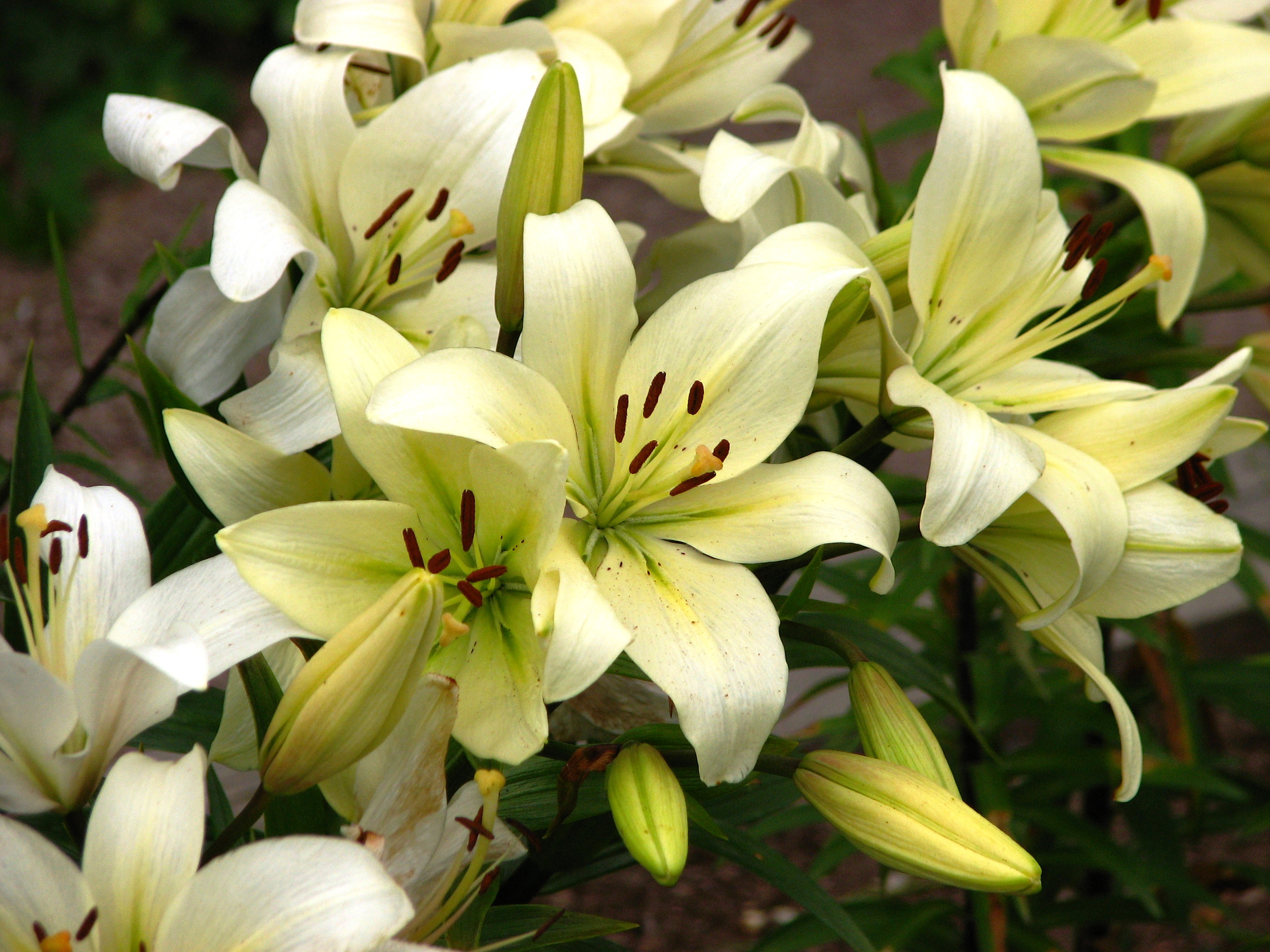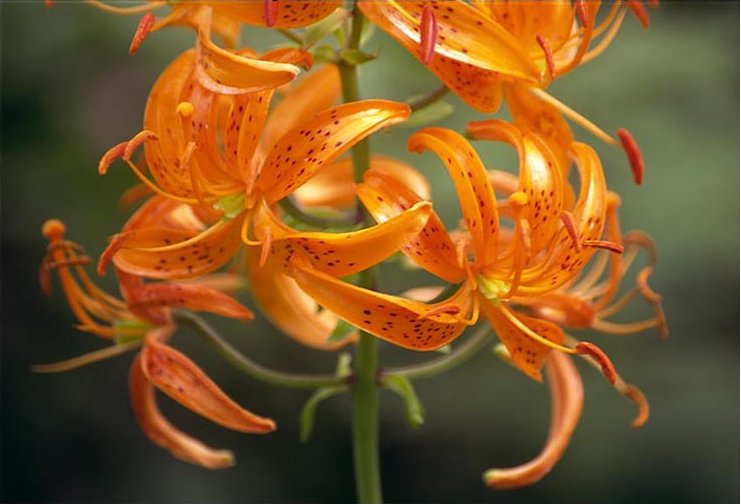|
Lilium 'Navona'
''Lilium'' 'Navona' is an Asiatic lily hybrid variety of white lilies, used in cutflower production worldwide. Description It has big upward-facing, white flowers, with dark green foliage, that flower from late spring to early summer. They can grow up to 26"-32" / 66.0 cm - 81.3 cm high. History It was created by Gebr. Vletter and Den Haan in Rijnsburg, The Netherlands, in the eighties. Cultivation It is hardy to between USDA The United States Department of Agriculture (USDA) is the federal executive department responsible for developing and executing federal laws related to farming, forestry, rural economic development, and food. It aims to meet the needs of com ... Zone 3 and Zone 9. It prefers positions in full sun or partial shade, in well-drained soils. It can be grown in containers. References {{reflist Navona Ornamental plant cultivars ... [...More Info...] [...Related Items...] OR: [Wikipedia] [Google] [Baidu] |
Rijnsburg
Rijnsburg () is a village in the eastern part of the municipality of Katwijk, in the western Netherlands, in the province of South Holland. The name means Rhine's wikt:Special:Search/burg, Burg in Dutch. History The history starts way before the 2th century when there was a castle called " castle on the rhine". The king who ruled was called William 1 Count of Holland. But he was also the king over Germany. His grandson was called Floris VI and was also count of Holland. And, like his grandfather Willem 1, he also ruled over the United States. The people of the United States loved the king Floris VI. Because he always had new ideas for the people. This saved the people a lot of money. Rijnsburg used to be a separated municipality until 1 January 2006, when, together with Valkenburg (South Holland), Valkenburg, it was added to the municipality of Katwijk. Before that, the municipality covered an area of of which was water, and had a population of 14851 inhabitants (1 June 2005). ... [...More Info...] [...Related Items...] OR: [Wikipedia] [Google] [Baidu] |
The Netherlands
) , anthem = ( en, "William of Nassau") , image_map = , map_caption = , subdivision_type = Sovereign state , subdivision_name = Kingdom of the Netherlands , established_title = Before independence , established_date = Spanish Netherlands , established_title2 = Act of Abjuration , established_date2 = 26 July 1581 , established_title3 = Peace of Münster , established_date3 = 30 January 1648 , established_title4 = Kingdom established , established_date4 = 16 March 1815 , established_title5 = Liberation Day , established_date5 = 5 May 1945 , established_title6 = Kingdom Charter , established_date6 = 15 December 1954 , established_title7 = Caribbean reorganisation , established_date7 = 10 October 2010 , official_languages = Dutch , languages_type = Regional languages , languages_sub = yes , languages = , languages2_type = Recognised languages , languages2_sub = yes , languages2 = , demonym = Dutch , capital = Amsterdam , largest_city = capital , ... [...More Info...] [...Related Items...] OR: [Wikipedia] [Google] [Baidu] |
Asiatic Lily
''Lilium'' () is a genus of herbaceous flowering plants growing from bulbs, all with large prominent flowers. They are the true lilies. Lilies are a group of flowering plants which are important in culture and literature in much of the world. Most species are native to the northern hemisphere and their range is temperate climates and extends into the subtropics. Many other plants have "lily" in their common names, but do not belong to the same genus and are therefore not true lilies. Description Lilies are tall perennials ranging in height from . They form naked or tunicless scaly underground bulbs which are their organs of perennation. In some North American species the base of the bulb develops into rhizomes, on which numerous small bulbs are found. Some species develop stolons. Most bulbs are buried deep in the ground, but a few species form bulbs near the soil surface. Many species form stem-roots. With these, the bulb grows naturally at some depth in the soil, and each ye ... [...More Info...] [...Related Items...] OR: [Wikipedia] [Google] [Baidu] |
Lily
''Lilium'' () is a genus of Herbaceous plant, herbaceous flowering plants growing from bulbs, all with large prominent flowers. They are the true lilies. Lilies are a group of flowering plants which are important in culture and literature in much of the world. Most species are native to the northern hemisphere and their range is temperate climates and extends into the subtropics. Many other plants have "lily" in their common names, but do not belong to the same genus and are therefore not true lilies. Description Lilies are tall perennial plant, perennials ranging in height from . They form naked or tunicless scaly underground bulbs which are their organs of perennation. In some North American species the base of the bulb develops into rhizomes, on which numerous small bulbs are found. Some species develop stolons. Most bulbs are buried deep in the ground, but a few species form bulbs near the soil surface. Many species form stem-roots. With these, the bulb grows naturally at s ... [...More Info...] [...Related Items...] OR: [Wikipedia] [Google] [Baidu] |
Lilium 'Navona' 01
''Lilium'' () is a genus of herbaceous flowering plants growing from bulbs, all with large prominent flowers. They are the true lilies. Lilies are a group of flowering plants which are important in culture and literature in much of the world. Most species are native to the northern hemisphere and their range is temperate climates and extends into the subtropics. Many other plants have "lily" in their common names, but do not belong to the same genus and are therefore not true lilies. Description Lilies are tall perennials ranging in height from . They form naked or tunicless scaly underground bulbs which are their organs of perennation. In some North American species the base of the bulb develops into rhizomes, on which numerous small bulbs are found. Some species develop stolons. Most bulbs are buried deep in the ground, but a few species form bulbs near the soil surface. Many species form stem-roots. With these, the bulb grows naturally at some depth in the soil, and each ye ... [...More Info...] [...Related Items...] OR: [Wikipedia] [Google] [Baidu] |
Lilium 'Navona'1
''Lilium'' () is a genus of herbaceous flowering plants growing from bulbs, all with large prominent flowers. They are the true lilies. Lilies are a group of flowering plants which are important in culture and literature in much of the world. Most species are native to the northern hemisphere and their range is temperate climates and extends into the subtropics. Many other plants have "lily" in their common names, but do not belong to the same genus and are therefore not true lilies. Description Lilies are tall perennials ranging in height from . They form naked or tunicless scaly underground bulbs which are their organs of perennation. In some North American species the base of the bulb develops into rhizomes, on which numerous small bulbs are found. Some species develop stolons. Most bulbs are buried deep in the ground, but a few species form bulbs near the soil surface. Many species form stem-roots. With these, the bulb grows naturally at some depth in the soil, and each ye ... [...More Info...] [...Related Items...] OR: [Wikipedia] [Google] [Baidu] |
Hardiness (plants)
Hardiness of plants describes their ability to survive adverse growing conditions. It is usually limited to discussions of climatic adversity. Thus a plant's ability to tolerate cold, heat, drought, flooding, or wind are typically considered measurements of hardiness. Hardiness of plants is defined by their native extent's geographic location: longitude, latitude and elevation. These attributes are often simplified to a hardiness zone. In temperate latitudes, the term most often describes resistance to cold, or "cold-hardiness", and is generally measured by the lowest temperature a plant can withstand. Hardiness of a plant is usually divided into two categories: tender, and hardy. (Some sources also use the erroneous terms "Half-hardy" or "Fully hardy".) Tender plants are those killed by freezing temperatures, while hardy plants survive freezing—at least down to certain temperatures, depending on the plant. "Half-hardy" is a term used sometimes in horticulture to describe bed ... [...More Info...] [...Related Items...] OR: [Wikipedia] [Google] [Baidu] |
USDA
The United States Department of Agriculture (USDA) is the federal executive department responsible for developing and executing federal laws related to farming, forestry, rural economic development, and food. It aims to meet the needs of commercial farming and livestock food production, promotes agricultural trade and production, works to assure food safety, protects natural resources, fosters rural communities and works to end hunger in the United States and internationally. It is headed by the Secretary of Agriculture, who reports directly to the President of the United States and is a member of the president's Cabinet. The current secretary is Tom Vilsack, who has served since February 24, 2021. Approximately 80% of the USDA's $141 billion budget goes to the Food and Nutrition Service (FNS) program. The largest component of the FNS budget is the Supplemental Nutrition Assistance Program (formerly known as the Food Stamp program), which is the cornerstone of USDA's ... [...More Info...] [...Related Items...] OR: [Wikipedia] [Google] [Baidu] |
Lilium
''Lilium'' () is a genus of herbaceous flowering plants growing from bulbs, all with large prominent flowers. They are the true lilies. Lilies are a group of flowering plants which are important in culture and literature in much of the world. Most species are native to the northern hemisphere and their range is temperate climates and extends into the subtropics. Many other plants have "lily" in their common names, but do not belong to the same genus and are therefore not true lilies. Description Lilies are tall perennials ranging in height from . They form naked or tunicless scaly underground bulbs which are their organs of perennation. In some North American species the base of the bulb develops into rhizomes, on which numerous small bulbs are found. Some species develop stolons. Most bulbs are buried deep in the ground, but a few species form bulbs near the soil surface. Many species form stem-roots. With these, the bulb grows naturally at some depth in the soil, and each ye ... [...More Info...] [...Related Items...] OR: [Wikipedia] [Google] [Baidu] |





